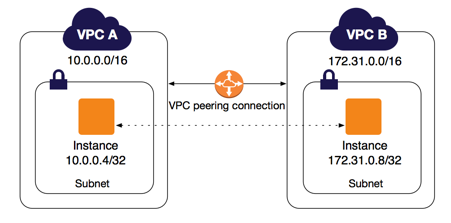Video streaming analysis to detect emotions
This project is focused on deep learning for processing audio and videos in order to determine emotions in communication.
The analysis of emotions in a video streaming can be done by exploiting two channels: audio streaming, and the image sequence. In a first step, I only focused on audio.
MFCC coefficients have been the state of the art in audio natural language processing. Research continues to be conducted for a better exploitation of audio to improve the applications of artificial intelligence in everyday life. Considering this point, I found it appropriate to use this approach to extract interesting features to feed to machine learning algorithms for prediction.
I. Working with audio files
I.1. MFCC features using Librosa
Many Python librairies deal with signal and audio processing, here I only talk about Librosa. For a better understanding, I would start by reminding some concepts upstream of the MFCC coefficients.
I.1.1. Audio representations
I.1.1.1. Audio wave
Sound is a mechanical wave that is transmitted from a source in an elastic medium. The perturbation is a local change of the atmospheric pressure causing the vibrations of the air molecules. Human beings and many animals feel this wave through the sense of hearing.
Typically, an audio wave has a form as represented in the following figure, where the time-evolution of the perturbation amplitude is represented.

I.1.1.2. Spectrogram
Since for audio signals, there is time-evolution of the frequencies, the well-known Fast Fourier transform (FFT) allows to visualize the spectrum of each time window, and the spectrogram is obtained when FFT is computed on overlapping windows of the signal.
A visualisation is shown on the following figure where time is on x-axis, frequency on y-axis and relative intensity on the colorbar.

Spectrogram is a way to process audio data in order to extract interesting features, but for this project I used Mel Frequency Cepstral Coefficients (MFCC) taking into account human perception for sensitivity at frequencies.
I.1.1.3. MFCC features
MFCC are widely used features for audio and speech recognition, and have been the state-of-the-art ever since as they represent the shape of the vocal tract. Following are steps to get insight of how they are computed:
- The audio signal is divided into short frames (20 - 40 ms).
- For each frame, the periodogram (Fast Fourier Transform) estimate of the power spectrum is computed.
- In order to consider our human sensitivity of frequencies, the mel filterbank to the power spectra is applied and, the energy in each filter is summed.
- The logarithm of all filterbank energies is taken, as we don’t hear loudness in a linear scale.
- Take the Discrete Cosine Transform (DCT) of the log filterbank energies in order to decorrelate computed energies since mel filters are all overlapping.
It is easy to compute MFCC using Librosa, and they are shown in the following figure where time is on the x-axis.

I.1.2. Results and discussions
Firstly, I used audio files in RAVDESS dataset. For each file, I only took the first seconds in order to have feature vectors of same size, and I computed their MFCC features. MFCC features are represented in the form of a matrix where there are time windows in x-axis, and for each windows, we have MFCC features. At the end, an audio file is represented in the way of an image and therefore, it can be analyzed like an image.
Many classical machine learning algorithms need a feature vector as an input, so sometimes, the average of MFCC through time is computed and it is used to train these machine learning models. By this way, many informations are lost. It is possible to do better with deep learning. In order to use these new features to feed a neural network, I choose to re-implement a model found in the literature.
The model is a convolutional neural network whose architecture is given in the following:
def CNN_model():
model = tf.keras.models.Sequential()
model.add(tf.keras.layers.Conv2D(256, input_shape=(X_train.shape[1],
X_train.shape[2], 1),
kernel_size=(4, 4),
activation='relu'))
model.add(tf.keras.layers.MaxPooling2D(pool_size=(4, 4)))
model.add(tf.keras.layers.BatchNormalization())
model.add(tf.keras.layers.Dropout(0.8))
model.add(tf.keras.layers.Flatten())
model.add(tf.keras.layers.Dense(64, activation='relu'))
model.add(tf.keras.layers.Dropout(0.2))
model.add(tf.keras.layers.Dense(32, activation='relu'))
model.add(tf.keras.layers.Dense(8, activation='softmax'))
return model
I clearly conclude that model overfit (even with dropout) as train score is around 0.99 while validation score is around 0.65. Increasing dropout leads to underfit (decrease of the train score to 0.8) keeping overfitting (train and validation scores remaining too separated), as it can be shown in the following figure.
I was looking insights to increase the validation score: data augmentation on the same dataset, add new data sets, change the architecture of the neural network…
I started with another dataset: Toronto emotional speech set (TESS). It is little different from the previous RAVDESS as the duration of audio is mainly smaller than 2 seconds. Training the same (previous) neural network (and with large dropout probability) with only this dataset led to great performances (larger than 0.98 for both train and validation sets, even for number of epochs smaller than 35).
In order to train model with several types of audio, for variety and diversity, I used the both datasets, even if it may be challenging to accurately use data from different sources.
Using RAVDESS and TESS, with the same neural network architecture, I got a training score of 0.86 and a validation score of 0.8
I.2. Audio features with Wav2Vec2
Wav2Vec2 is a vectorized representation of audio files that is feeded to machine learning algorithms. It is similar to word2vec used for word embeddings in natural language processing. After training to learn these features, this vector supposedly carries more representation information than other types of features, these are recent advancements in audio processing.
Currently, my understanding of Wav2Vec2 library for this emotion detection was limited, in addition I got good validation scores with MFCC features, so I only implemented emotion detection based on MFCC features.
II. Working with video files (images frames)
A video is a succession of several images recorded with a frame rate (generally larger than 20 frames/s). The analysis of a video streaming relies on the analysis of those different images.
In order to preprocess “videos” before feeding to deep learning models, I make some steps as shown in the following figure :

- I only take one frame because I could consider that during the two seconds of recording, the emotion state of the person doesn’t change.
- Then I use a first algorithm for face detection to only detect face on the image and to crop the image around the detected face.
- The size of the new image is also rescaled and transformed to a grayscaled
image to disable the possible race bias. - The image is fed to a pre-trained VGG16-based CNN as in the following:
vgg_model = VGG16(include_top=False, weights='imagenet', input_shape=(224, 224, 3))
for layer in vgg_model.layers:
layer.trainable = False
x = vgg_model.output
x = Flatten()(x)
x = Dense(512, activation='relu')(x)
#x = Dropout(0.5)(x)
x = Dense(256, acctivation='relu')(x)
x = Dense(8, activation='softmax')(x)
transfer_model = Model(inputs=vgg_model, outputs=x)
Train and validation scores are great, 0.9947 and 0.9358 respectively, so I suppose no need to a very spend long time for fine tuning hyperparameters.
III. The app
I planned to realize a web app to be used and tested by any user.
Considering my knowledge and the desired features of the app, Streamlit has been my choice to build the app. The overview of the app is as following:

During the implementation of the app, I face several difficulties:
-
I have to be able to simultaneously record audio and video streaming of the user, and use the both channels to make predictions of the emotional state.
-
Locally, when I test the app, the predictions seem to be random for both audio and video. I realize that the training data is not very representative of the global population. The problem should be considered for different types of people, use the appropriate data for the people to study.
-
Considering all that, I hypothesize that for real-world use, one should not necessarily rely on only the validation scores, but have a thorough idea of what the algorithm is based on to make the classification. This could avoid many biases present in the datasets.
Despite the poor predictions in real conditions, I tried to deploy the application so that it could be used by anyone. So I tried several solutions, but currently, the operational constraints and my knowledges did not allow me to succeed:
-
I had used Streamlit because it allowed me to record the user’s video and audio stream, because I don’t know of any other frameworks that allow me to do this.
-
I had to train a relatively large model (based on VGG) which made it impossible to deploy it via Streamlit. Also, the deployment platforms don’t really like the audio and video recording feature present in the app, so I get error messages when I try to deploy with Heroku as well.
-
I also containerized the model with Docker and tried to install additional libraries needed for Linux OS systems. The application starts correctly (after all that) but at the end there are still error messages.





Leave a comment